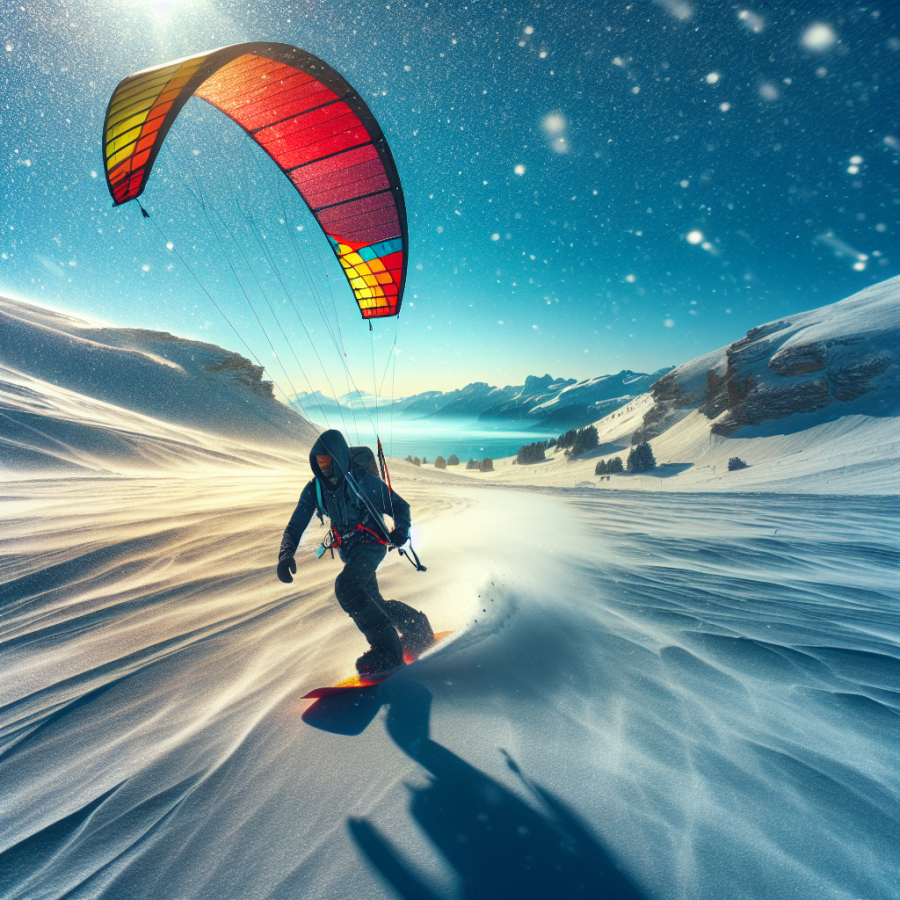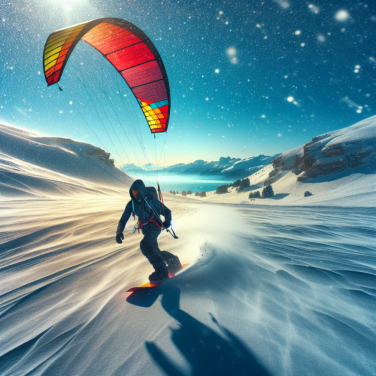Unveiling the Fundamentals of Snowkiting: Your Gateway to a Winter Wonderland
Snowkiting, an exhilarating winter sport that combines elements of snowboarding, skiing, and kite-flying, has rapidly gained popularity among adventure enthusiasts around the globe. It offers a unique way to harness the power of the wind to glide across snowy terrains, ascend mountains, and perform breathtaking aerial maneuvers.
**Understanding the Gear**: Before venturing into the icy playground, getting acquainted with the essential equipment is crucial. At the heart of snowkiting is the kite, which comes in various shapes and sizes, tailored to different skill levels and wind conditions. Foil kites are preferred for their stability and ease of use in the snow. Aside from the kite, you'll need a kite harness that distributes the pull of the kite evenly across your body, providing comfort and control. As for the board, enthusiasts can choose between snowboards or skis, depending on their preference and previous experience.
**Learning the Technique**: Snowkiting is not just about being towed by a kite; it's about engaging with the wind and understanding its nuances. Beginners should start with fundamental kite control skills on level ground, learning how to launch, steer, and land the kite safely. Gradually, as they gain confidence, they can progress to more challenging terrains and start integrating their snowboard or ski skills. Body position and edge control are essential to maintain balance and direction while riding.
**Safety Measures**: The unpredictable nature of the wind and weather in winter landscapes makes safety paramount in snowkiting. Wearing a helmet, impact vest, and appropriate layers can help mitigate the risks. Moreover, it's important to check the weather forecast and understand the signs of changing conditions to avoid getting caught in a dangerous situation. Snowkiters are advised to never venture out alone and to always inform someone about their intended location and return time.
**Finding the Perfect Spot**: The beauty of snowkiting lies in the vast array of locations it can be practiced, from frozen lakes to open fields and mountainous areas. What's important is to find spots with steady wind and ample space free of obstacles such as trees, power lines, and buildings. Beginners should seek out areas with consistent and moderate wind speeds of around 10-15 mph to prevent being overwhelmed.
**Embracing the Community**: The snowkiting community is known for being welcoming and enthusiastic. Engaging with this community can provide valuable learning opportunities, tips, and shared experiences.
Read also:
The Thrilling Descent: Mastering the Art of Downhill Racing
Mastering the Elements: Tips and Techniques for an Exhilarating Snowkiting Experience
Snowkiting combines the dynamic thrill of kiteboarding with the frosty splendor of snow-covered landscapes, offering a unique communion with nature's raw elements. To master the dance between the wind and snow, enthusiasts must develop a synthesis of skills, strategies, and a respect for the environment.
Firstly, it's essential to understand your equipment. Select a kite that fits your experience level and the day's conditions. For beginners, a smaller kite is advisable to keep the power manageable. As for the snowkiting harness, it should be comfortable yet secure, as this is your link to the kite. Choosing the right board or skis is also essential; boards offer better control for freestyle movements, while skis can be preferable for those looking to explore more rugged terrain.
Understanding weather patterns is crucial; wind consistency and direction greatly affect your snowkiting experience. Utilize local weather reports and apps to find the best time to head out. Always look for signs of changing weather conditions to avoid getting caught in potentially dangerous situations.
Learning to read the snow conditions is another key skill. Just like with skiing or snowboarding, different types of snow can affect speed, control, and the overall enjoyment of your ride. Fresh powder can be exhilarating but challenging, while icy conditions demand caution and extra skill.
Next, work on your stance and kite-flying techniques. A stable, balanced stance ensures you can respond quickly to changes in wind and terrain. In terms of kite control, practice makes perfect. Start with simple maneuvers, and gradually work your way up to more complicated tricks and jumps. Always be mindful of your safety zone – the area downwind where you can safely navigate and potentially crash without hazards.
As with any extreme sport, safety is paramount. Wear appropriate protective gear including a helmet, goggles, and appropriate layers to insulate against the cold. In addition, a safety release system should always be within easy reach in case you need to detach from your kite quickly.
Taking lessons from a professional can drastically improve your skills and safety preparedness. Certified instructors can provide invaluable feedback and personalized tips to help you advance more quickly and with a stronger safety foundation.
Lastly, while snowkiting can be a solitary experience, there's much to gain from joining a community of fellow kiting enthusiasts. Not only does it make the experience more social, but it can also enhance your learning curve as you exchange tips and stories with others who share your passion for this exhilarating winter sport.




